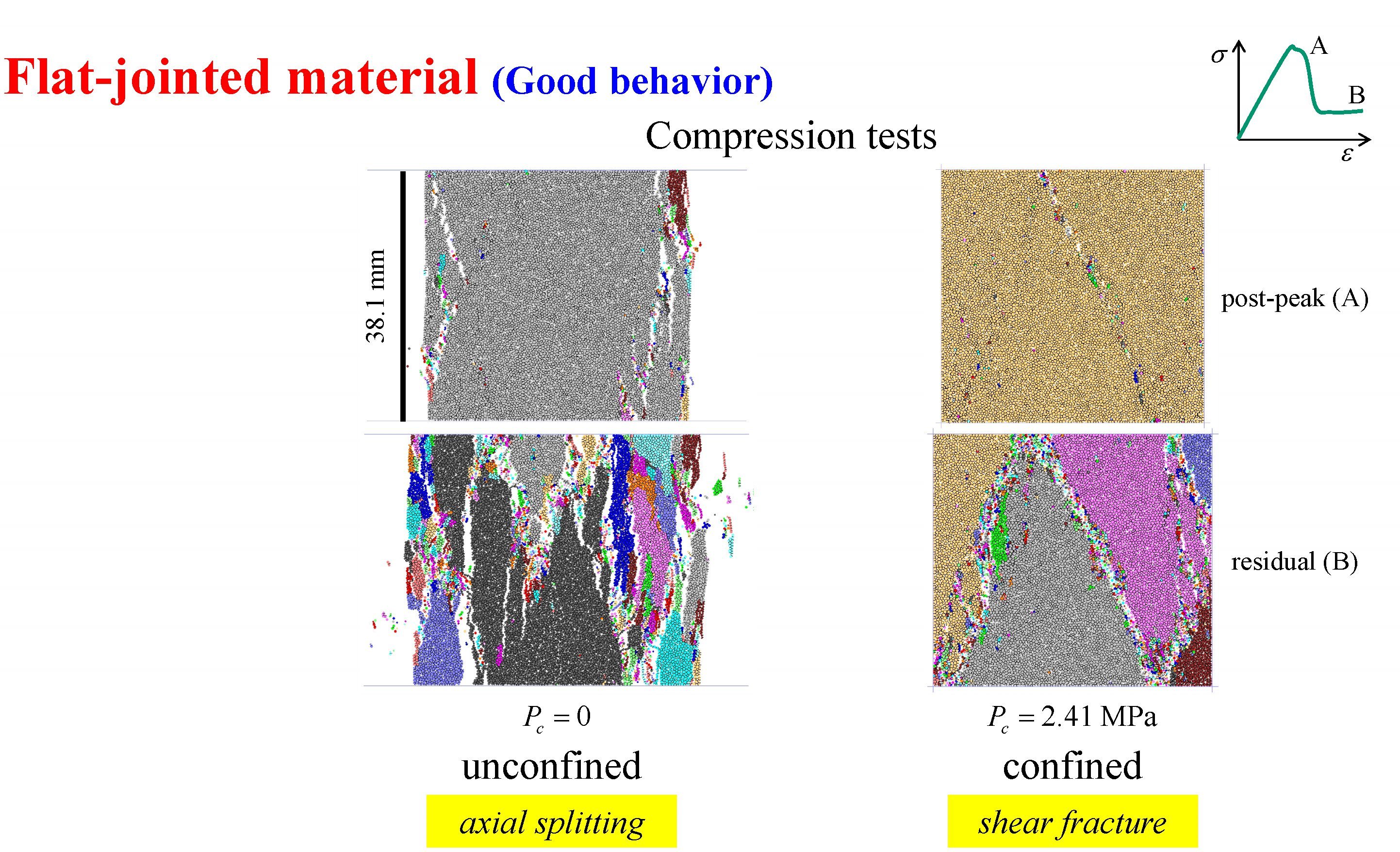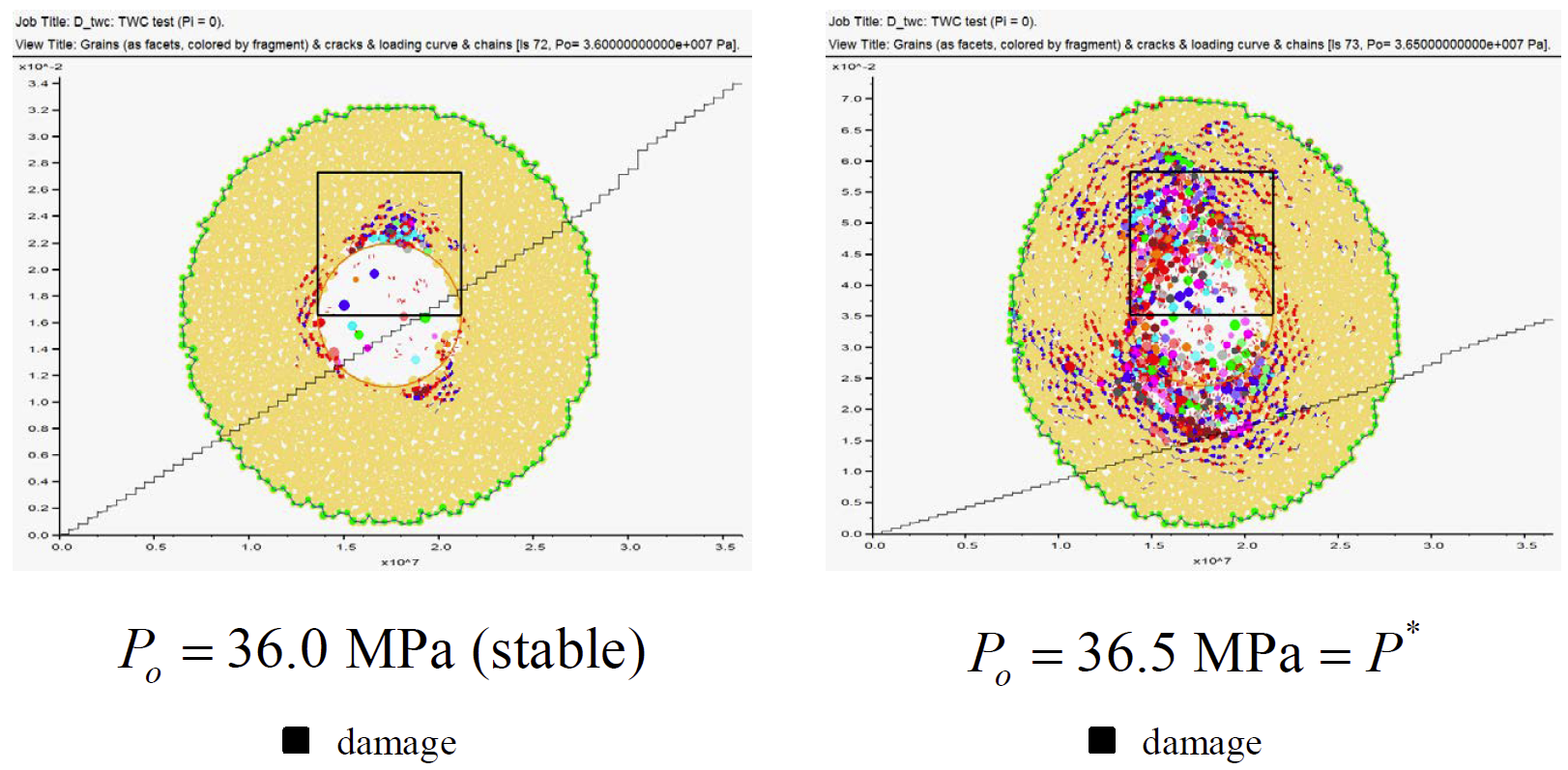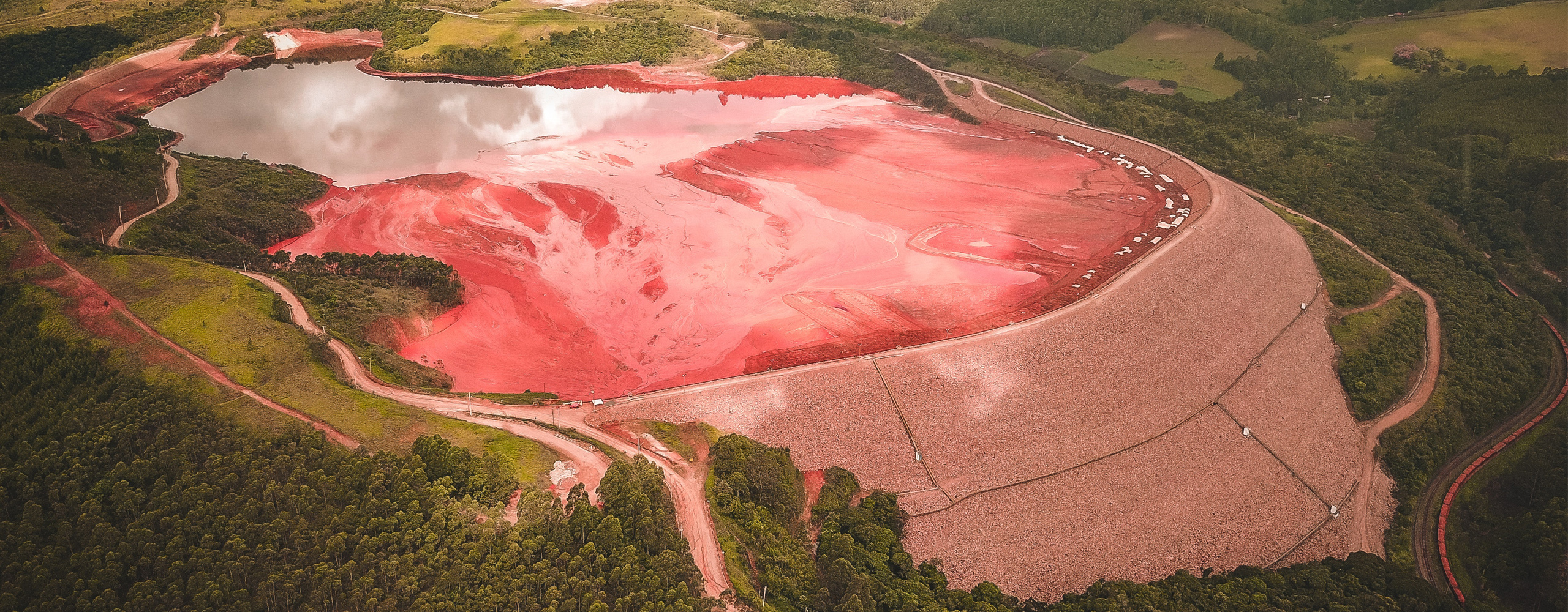A Flat-Jointed Bonded-Particle Model for Rock
Abstract: Bonded-particle models (BPMs) provide a synthetic material consisting of a packed assembly of rigid grains joined by deformable and breakable cement at grain-grain contacts, and whose mechanical behavior is simulated by the distinct-element method. Contact- and parallel-bonded PFC2D and PFC3D models of circular and spherical grains suffer from the limitation that if one matches the unconfined-compressive strength of a typical compact rock, then the direct-tension strength of the model will be too large. This limitation has been overcome by creation of the flat joint contact model. This contact model provides the macroscopic behavior of a finite-size, linear elastic, and either bonded or frictional interface that may sustain partial damage such that the flat-jointed material can mimic the microstructure of angular, interlocked grains. Partial interface damage with continued moment-resisting ability (to resist grain rotation) is a microstructural feature necessary to obtain the relatively large compressive- to-tensile strength ratio of most compact rocks. The ability to match this ratio is demonstrated by creating a 3D flat-jointed material for Lac du Bonnet granite that matches the elastic modulus, direct-tension strength, and compressive strengths up to 6-MPa confinement.
Keywords: PFC2D, PFC3D, bonded-particle models (BPM), synthetic material, distinct-element method, numerical modeling, flat joint contact model, compressive-to-tensile strength ratio, Lac du Bonnet granite, synthetic laboratory tests
Potyondy, D. O. (2018) “A Flat-Jointed Bonded-Particle Model for Rock,” in Proceedings, 52nd U.S. Rock Mechanics/Geomechanics Symposium (ARMA, June 2018, Seattle, Washington), ARMA 18-1208. Alexandria, Virginia: ARMA. ICG09333

Simulating Perforation Damage with a Flat-Jointed Bonded-Particle Material
Abstract: We explore the feasibility of using a bonded-particle model (BPM) to simulate the rock disaggregation process occurring near a wellbore perforation in sandstone by addressing the simpler question: Can we construct a 2D BPM that produces surface fragments when subjected to boundary conditions similar to those around a wellbore perforation in dry sandstone? The answer to this question is yes. We can construct a 2D flat-jointed material to represent Castlegate sandstone. Our synthetic material matches much of the macroscopic response (including the direct-tension and unconfined-compressive strengths) and many of the mechanisms that occur during direct-tension and compression tests as well as the trends in the macroscopic response and the primary mechanism that occurs during thick-walled cylinder (TWC) tests to produce a breakout failure type. The primary mechanism is termed “buckling-assisted fragmentation,” in which a buckling and spalling process produces thin fragments of rock similar to onion skins, and thereby produces a breakout failure type. The perforation-collapse behavior of our synthetic material is related to the hole resolution (defined as the number of grains across the borehole diameter), with TWC strength decreasing as hole resolution increases. This observation suggests that perforation strength in a given material will decrease with increasing perforation size.
Keywords: PFC2D, perforation, damage, flat-joint, bonded-particle model, BPM, simulation, microstructure, sandstone, dog-ear, breakouts, notch
Potyondy, D.O. “Simulating Perforation Damage with a Flat-Jointed Bonded-Particle Material,” paper ARMA 17-223 in Proceedings of 51st U.S. Rock Mechanics/Geomechanics Symposium, San Francisco, USA, 25–28 June 2017
Download Presentation (74 MB, videos embedded)

